Ferguson
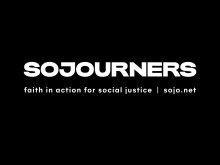




I am the Dean of Students at Covenant Theological Seminary, the National Seminary of the Presbyterian Church in America (PCA). I am the pastor of South City Church in Saint Louis. South City Church is a PCA congregation, and it is predominantly white. I am a retired full colonel PCA Army chaplain. I was born and raised in North Saint Louis city. My father now lives in Ferguson, Mo. I am a black man. If that comes as a shock, believe me I understand; it is a shock to me every morning when I wake up and go to work at Covenant Seminary in West Saint Louis County, a mostly wealthy and white suburb. It shocks me every time I walk into my church in South Saint Louis and remember that I am one of only 47 black pastors in my denomination and that I work in a mostly white conservative, evangelical church. I am constantly at the feet of Jesus asking for help in navigating the racial, cultural, and generational waters around me. It is a wonderful opportunity, but it is challenging for someone like me; I grew up believing that white people never really wanted to be in close proximity to black people unless they were the ones controlling the situation. There was also the belief that the only black people who were successful in white organizations were the ones who did not mind being tokens without real dignity in the system. There may be people who believe these things about me. I have even questioned myself as to why I have been given so many opportunities in the PCA. I sometimes don’t like the answers that come to mind.
Recently, a young pastor asked my opinion on cross-cultural ministry. He asked me how an African American got two positions as both Covenant’s Dean of Students and as pastor of South City Church. I explained, “it makes no sense, since so much of the history in our denomination makes me the wrong guy for the job! But through God’s sovereign will, here I am!” His response was, “I guess God always sends the wrong messenger.”

It is difficult to understand why people, particularly Christians, view a statement as patently obvious as “Black Lives Matter” as a subject for controversy. However, sometimes the most obvious things still need to be said.
So:
Black lives matter because God made every one of us in God’s image. Black lives matter because the Bible tells us that we are part of a body and the eye cannot say to the hand, “I don’t need you.” Black lives matter because God pays particular care to those crying out under the burden of injustice and oppression.
As people of faith in a neighborhood that has been rocked by protests, tear gas, and arrests, we have sought to stand in solidarity with those who are groaning under the burden of oppression. We offer some physical support — hand warmers, a cup of coffee, an extra pair of socks, but we also offer our presence. The Bible often refers to Christians as “witnesses,” and there is something important about simply standing next to our neighbors in the streets and seeing what is actually happening.
We firmly believe that Jesus needs to be down in the clouds of tear gas and he lets us, his people, participate in his reconciliation by bringing him there with our own two feet. Christians, and particularly evangelicals, need to be in the streets. Our neighbors are just outside our doors, crying out that the system is broken and that our culture doesn’t value the lives of our brothers and sisters. We, as Christians, believe in sin and brokenness and we need to live out our belief that God values all of God’s people even as our culture picks and chooses who is worth caring about.
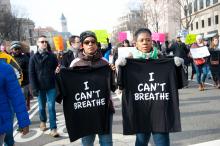
Maybe I am the only one wondering “What can I do?” as I watch and read the news of demonstrations throughout the country. I have a lot of excuses. I can’t go to the protests tonight because my son has a concert. I don’t coordinate the church service and announcements, so I can’t control what will and won’t be said. I’m on sabbatical so I won’t be a part of the conversations that I hope will happen between colleagues at meetings. But I hope I am not the only one wondering what can be, needs to be, ought to be done.
The videos are chilling – Eric Garner’s life is being choked out of him until he goes limp on the sidewalk and Tamir Rice is being gunned down, the police squad door barely opening as the officer drives by. The images of protests and protesters being tear gassed and throwing canisters back at police armed in riot gear remind me of the summer I spent in Korea, marching in protests against U.S. military presence. That was the summer I learned about wearing damp handkerchiefs near my eyes and over my nose to help with the sting of tear gas and how to wet the wick of a homemade Molotov cocktail before lighting and lobbing. A few years later in a hotel room in Indiana after a job interview, I watched protests and riots take over Los Angeles. Living with, wrestling with injustice day in and day out is a bit like a kettle of water just about to hit boiling. At some point, the water boils, the steam is released.
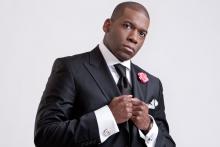
They filed into the gym Jan. 12 for an assembly about graduation and applying for colleges — an intentionally vague description that wouldn’t be out of the ordinary for a senior class.
Instead, the seniors at Normandy High School learned that full-tuition scholarships would be given to 11 of them in honor of Michael Brown, who graduated just days before he was fatally shot by a Ferguson police officer.
Ferguson’s death — and the subsequent grand jury decision not to charge the white officer with his death — set off protests and heightened racial tensions coast to coast, followed by a similar case of a unarmed black man on Staten Island who died in a police chokehold.
“The way we deal with this situation is we breathe life into you,” said George T. French, president of Miles College in Birmingham, Ala., which is offering two of the scholarships. “We believe in you, Normandy High School seniors.”
More than a dozen local and national church leaders sat in folding chairs on the gym floor, inside a high-poverty school south of Ferguson where opportunity runs short and paying for college doesn’t come easily for most.
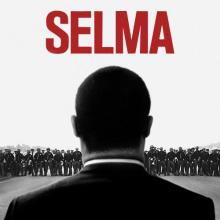
Just as Selma opened in wide-release I began to receive requests for advice on how to lead churches and faith communities through discussions of the film. Years ago, I used to lead these kinds of dialogues in my capacity as the Greater Los Angeles director of racial reconciliation for a college-based parachurch ministry. Some of our most fruitful conversations came after we saw films like Selma or read a book together or had a common experience of racial injustice that we needed to process.
The film Selma is an incredibly helpful dialogue centerpiece at the moment. But like all things, other dialogue opportunities will rise and take center stage in the coming weeks and months. Other films will be released, helpful books will be published, and public events will provoke us to need to dialogue again. When those opportunities surface, I recommend using the format below as a template for similar dialogues moving forward. I’ve collected my Top 5 recommended resources to help guide your community dialogue on racial justice and Selma.

In the first moments of Selma, I feel butterflies rise in my stomach as Dr. Martin Luther King, Jr. (David Oyelowo) practices his 1964 Nobel Peace Prize speech while trying to tie his ascot. Butterflies rumble in my soul. I am almost fearful as we step into the world of Selma, because I am a student of the Civil Rights era. The movement’s lessons have shaped my life. I feel like I am about to meet my heroes.
So, King fiddles with his ascot in Oslo, Norway, and his wife Coretta (Carmen Ejogo) comes close to comfort him, and little girls descend into the bowels of the Sixteenth Street Baptist Church in Birmingham, Ala., and butterflies rise and my soul sits at attention. I know what is coming: hell … and glory.
The film still haunts me. Every performance is nuanced, textured, and humanizing. Director Ava DuVernay’s technique is breathtaking. Her eye translates words into feelings into images — moving images that never leave you. Brutality and reverence occupy single frames. At once, the audience is horrified and awe-struck. I have no doubt Selma should win Oscars.
It is an amazing film, but it doesn’t haunt me because of its excellence. As I sat in the dark watching the movement unfold before my eyes, it was not the past that haunted me. It was the present.

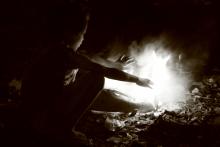
Hope is not a feeling. It is a decision — a choice you make based on what we call faith or moral conscience, whatever most deeply motivates you.
I have said that for many years, but this Advent and Christmas season tests my words — even in my own heart.
This is not a time that many of us are feeling a great deal of hope. I hear that from many friends and allies as well.
In fact, many events this year feel like they have sucked the hope right out of us.
And yet, even in the midst of terrible events and stories, the possibilities of hope still exist depending on what we decide to do for reasons of faith and conscience. In fact, people of faith and conscience are already making a difference in the most difficult situations and places.
And that gives me hope. This season of Advent, in the Christian tradition, is a call to patient waiting.
Christmas is the celebration of God literally coming into the world in order to change it.
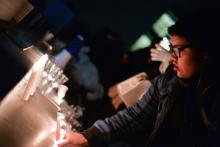
What can local churches do to support ongoing protests against, and indeed upheaval of, an unjust criminal justice system and deep-seated white supremacy? In a season that Lisa Sharon Harper recently described as “Advent as protest,” what might it mean for Christians to anticipate the coming of Christ by physically challenging oppression? For pastors all over the United States, these are the questions of the moment.
In Washington, D.C., local faith communities sought to live into the vision of Advent as protest by holding a “vigil for justice.” Although this vigil beautifully documented the capacity of the local church to advocate for justice, the way local media framed the vigil forces communities of faith to think more deeply about their understanding of solidarity.
Spread out along nearly 6.5 miles of 16th Street, hundreds of people held candles and signs in support of recent protests against racial injustice. As people passionately waved their signs or held their heads down in prayerful lament, passing cars and buses slowed to honk in support. Catching on with the theme of Advent, attendees hoped to shine light in the darkness not only to create awareness and show solidarity, but also to testify to the hope of faith.
Cecilia Choi, a member of District Church explained, “This is the time of Advent when God came and he started his work of reconciliation with us by becoming one of us. And I think it’s perfect to come out and work on reconciliation and joining with our black brothers and sisters. They’re not just our neighbors, they’re our brothers and sisters in Christ. We have such an obligation to them. I think this is an act of worship.”
When asked why she was on the streets, one woman responded, “Well, what do I say? [Laughs.] That’s the meaning of our faith! To be one with people who are suffering.” Another man called racism “the deepest sin in the United States.”
Such descriptions of the vigil reach to the core of the church’s mission to “do justice, love mercy, and walk humbly.” Here are churches standing in solidarity with those suffering at the hands of racist oppression as an “act of worship.” Here are churches bringing their resources of prayer, lament, and peace into the public sphere, challenging observers to wrestle with God’s call to justice. Yet, though the event was beautiful, the way it was framed by local media raises tough questions for churches. Contrasting this demonstration with other recent protests, one reporter said, “This protest was in contrast to many of the protests we’ve seen over the past few weeks, with groups blocking traffic and loudly chanting. This group was quiet and purposeful.”
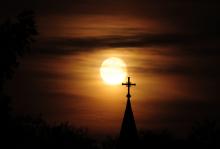
You may have never attended an "average" church, but you've certainly seen one. Older buildings, often made of dark brick, old-fashioned roofs that slope down from the center — possibly a bell tower and a steeple. St. Stephen's. Redeemer. Hope. Resurrection. St. Thomas. St. Vincent. Beautiful Savior. The names recall an age gone by — not just the 1950s, when neighborhoods walked together to Sunday morning worship, but also an age 2,000 years ago, when the world was changed by the witness of Stephen the martyr, and Jesus' resurrection from death on a cross in Jerusalem brought freedom and life to a world hungry for God's love and redemption.
If you've never been in an "average" church, or even if you have, long ago, you may wonder what it's still there for. The median American church has 75 regular participants in worship on Sunday morning. More than half of American congregations worship between 7-99 people each Sunday. They are strikingly homogeneous. In 2010, just 13.7 percent of congregations reported being "multiracial." Thirty percent of congregations still didn't have a website in 2010.
Reading these statistics, it may seem easy to despair — to drive by one church and then another, to attend worship there on Christmas Eve and wonder why you bothered.

For most of recorded history, Isis was an Egyptian goddess, a benevolent type who cared for widows and orphans, cured the sick and even brought the dead back to life.
This year, the world met the other ISIS.
The rise of the so-called Islamic State, variously known as ISIS or ISIL, dominated headlines in 2014 as a self-proclaimed caliphate sowed death and destruction across Iraq and Syria. For some, the group confirmed their worst fears about Muslim extremists, bent on killing religious minorities and subjugating women in a quest for domination that included leveling villages and beheading hostages.
The terror wrought by the Islamic State reflected a sense of turbulence that upended international news in 2014. But it was not the only source of unrest. The Ebola virus in west Africa put the world on edge, and a bloody war between Israelis and Palestinians in Gaza, kidnapped schoolgirls in Nigeria and the slaughter of more than 100 children at a military school in Pakistan added to the mix.
At home, America wrestled with police brutality as grand juries declined to prosecute officers in the deaths of unarmed black men in Ferguson, Mo., and New York City. From botched prison executions to a stream of desperate migrant children flooding America’s southern border, things felt troubled, disorienting, always on the verge of breaking apart.
Religion played a large role in those stories, and in other major headlines from 2014:


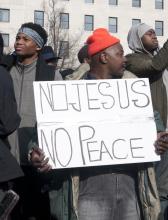
“Excuse my ignorance, I thought I was a free black man.”
“I’m 11 [years old], I matter.”
“You can choose to look away, but never again can you say you didn’t know.”
“How many times do we have to protest the same [s**t]?”
“White silence is white violence.”
“We have nothing to lose but our chains.”
These signs, and many others, lined the horizon of Pennsylvania Avenue on Saturday in Washington, D.C. In a ‘Justice for All’ march organized by Al Sharpton and the National Action Network, thousands of protesters gathered to protest police actions that have resulted in the deaths of unarmed young black men across the United States.
After marching from Freedom Plaza to the U.S. Capitol, protesters listened to speakers from national racial justice organizations address some of these most recent acts of police brutality.
Al Sharpton sought to draw attention to the diversity present on the streets.
“This is not a black march or a white march. This is an American march for American rights,” he said.
Indeed, the black community was not alone in speaking up against police brutality. One Latina activist encouraged her Latino brothers and sisters to “voice their pain” from police harassment and “come forth and unify with the African American community so we can be strong together.”
“¡Ya Basta!” she concluded. [“Enough is enough!”]
